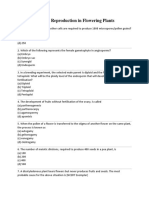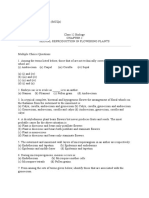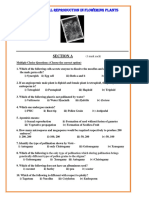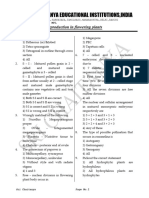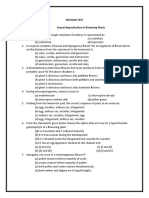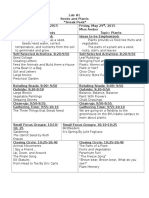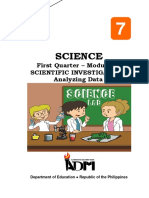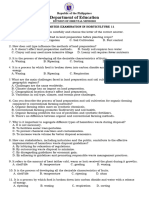0% found this document useful (0 votes)
54 views3 pagesPractice Questions Lesson 1
The document contains practice questions for a biology coaching class focused on reproduction in lower and higher plants, including multiple choice, short answer, diagrams, and matching exercises. It covers various topics such as gametophyte development, pollination mechanisms, and types of reproduction. The questions are designed to test knowledge on key concepts in plant biology.
Uploaded by
shubhh255Copyright
© © All Rights Reserved
We take content rights seriously. If you suspect this is your content, claim it here.
Available Formats
Download as PDF, TXT or read online on Scribd
0% found this document useful (0 votes)
54 views3 pagesPractice Questions Lesson 1
The document contains practice questions for a biology coaching class focused on reproduction in lower and higher plants, including multiple choice, short answer, diagrams, and matching exercises. It covers various topics such as gametophyte development, pollination mechanisms, and types of reproduction. The questions are designed to test knowledge on key concepts in plant biology.
Uploaded by
shubhh255Copyright
© © All Rights Reserved
We take content rights seriously. If you suspect this is your content, claim it here.
Available Formats
Download as PDF, TXT or read online on Scribd
/ 3





